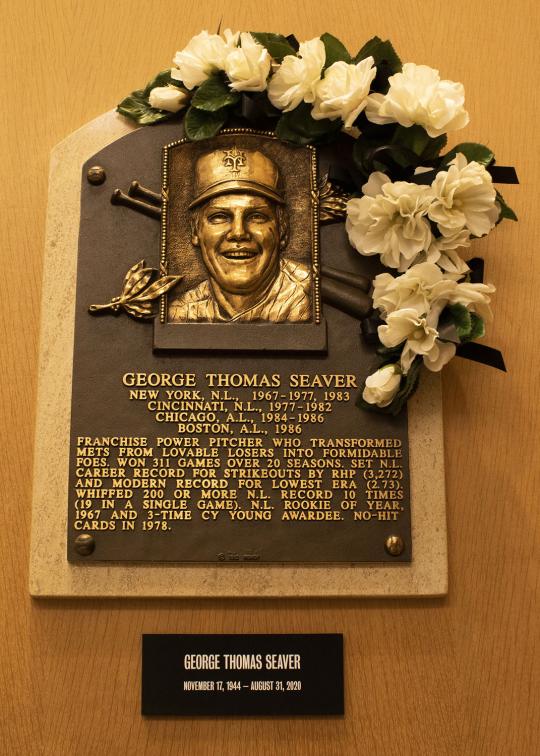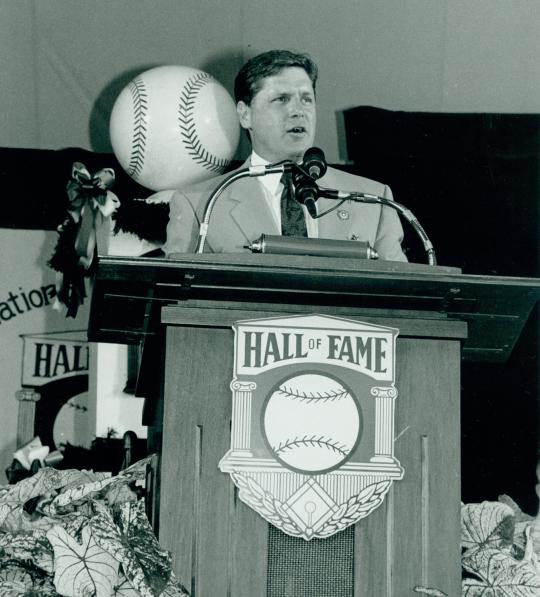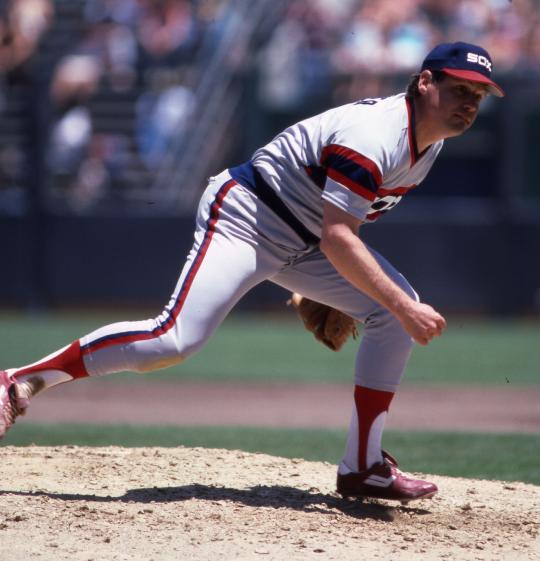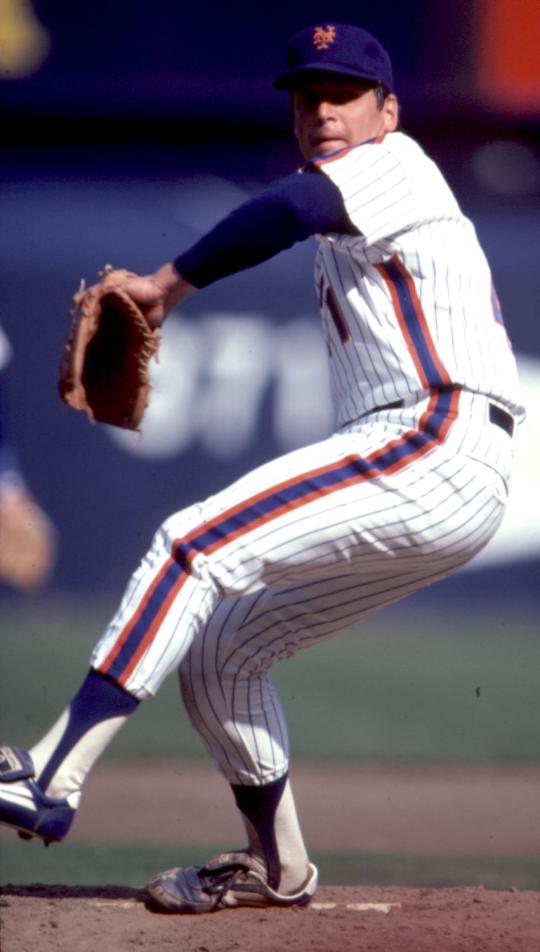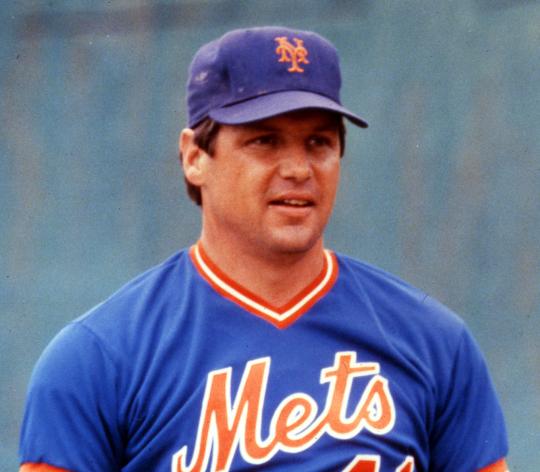- Home
- Our Stories
- #GoingDeep: Tom Seaver: A town, a team and a miracle
#GoingDeep: Tom Seaver: A town, a team and a miracle
Tom Seaver was a rabbit pulled out of a hat that turned a Major League Baseball franchise around.
No rabbit’s foot was ever luckier to a team than Seaver was to the Mets. But it was not his rabbit’s foot, but rather his right arm that made the difference.
Mets Gear
Represent the all-time greats and know your purchase plays a part in preserving baseball history.
In the 1960s, the expansion Mets were baseball’s loveable losers until the serious-minded pitcher from the University of Southern California arrived on the scene in 1967 and helped steer the organization into the direction of success, culminating with the stunning World Series championship run in 1969.
The Mets looked to Seaver’s maturity and attention to detail during his 10-plus seasons at Shea Stadium before a contract dispute led to a parting in 1977. Success followed Seaver to Cincinnati where he became another cog in the “Big Red Machine,” an ideal spot for a pitcher devoted to mechanics. He returned to the Mets for one season, then was left unprotected in the free agency compensation pool and went to the White Sox — then finally to the Red Sox .
By the time he walked away for good, Seaver had won three National League Cy Young Awards (also finishing second twice), was named to 12 All-Star teams, fashioned a record nine consecutive seasons of 200 or more strikeouts (leading the league five times), won three ERA titles and placed second in the 1969 NL Most Valuable Player Award voting (to the Giants’ Willie McCovey).
Hall of Fame voters for the Baseball Writers’ Association of America took notice of his 311 victories, 3,640 strikeouts, 231 complete games (including 61 shutouts) and 2.86 ERA and elected him in 1992 with 425 votes out of 430 ballots cast, good for a 98.84 percentage, a record that stood for 23 years.
He passed away on Aug. 31, 2020.
In 2009, Seaver was interviewed by Jack O’Connell, national secretary-treasurer of the BBWAA.
Hall of Fame: Not many people know that your real first name is not Tom.
Tom Seaver: That is correct. It is George. I was born Nov. 17, 1944 and named George Thomas Seaver. George was my mother’s father’s name, but I don’t think she was ever crazy about the name, so she just decided to call me Tom. I wish I had a better reason than that.
HOF: You grew up in Fresno, in California’s Central Valley. Your father, Charles, was quite an athlete, wasn’t he?
TS: Charlie Seaver was really a good athlete. He played pretty much all the sports, but his strength was golf. That was the core of his life, along with his work and his family. I was the last of four kids. He played on the Walker Cup team in 1932, and at one time he held the Southern California Amateur, the Northern California Amateur and the State Amateur championships. I think Johnny Miller and Tiger Woods are the only other golfers who did that, so that’s the kind of golfer my father was. But it was a family that always stressed education. One of my sisters went to Stanford, another to UCLA and my brother to Cal. I eventually got a scholarship to USC but not right away.
HOF: After serving six months in the U.S. Marine Corps, you attended Fresno City College for a year. Is that where you came into contact with Rod Dedeaux, the legendary University of Southern California baseball coach?
TS: No, I don’t think Rod ever came to see me. Just like any other organization, he had his birddogs, etc. He must have had someone in the Fresno area, a USC alum that was very up on the young players in the area. This was a town that had some good players go to the big leagues: Jim Maloney, Pat Corrales, Wade Blasingame. I got a call out of the blue from Rod. He asked me if I’d be interested in going to Alaska to play for the Alaska Goldpanners. One of the players on that team was Gary Sutherland, an infielder who later played a long time in the big leagues. I think that’s where I got showcased. Rod said, ‘I’d like to you to come to USC,’ and I said, ‘I can’t unless somebody pays for it.’ I couldn’t go unless I got a full ride, and I got a full ride.
HOF: What impact did Dedeaux have on you?
TS: I think more than anything else, enthusiasm. You couldn’t get away from it, the pride of wearing that Trojans jersey and all that rah-rah stuff. And he gave me the ball. I had a very difficult time even entering professional ball trying to throw a changeup. Rod tried to teach me the old Dodgers way of pulling the string of a curtain, you know, but I had too much energy and couldn’t do it. I had a good four-seam fastball and a slider and a sinker, and even then I had pretty good control. The main thing about Rod was that he gave me the ball. He gave me that trust. It’s pretty amazing when you think about it. I pitched one year at Fresno City College, one year at USC, one year at (Triple-A) Jacksonville and then get the ball for the second game of the (1967) season at Shea Stadium.
HOF: How you got to the Mets was kind of a round-about way. You were drafted by the Braves, but it was vetoed by the commissioner at the time, William “Spike” Eckert, because of a technicality. What happened?
TS: The rule then was that you couldn’t play in an exhibition game the year of the draft. I decided to enter the draft. It may have seemed like a knife in Rod’s back, but I was 21 years old and it was time for me to go do something. I wasn’t going to pass the opportunity up. I signed with the Braves, but it was voided by the commissioner. So now to the professionals I’m an amateur and to the amateurs I’m a pro. I’m stuck. My dad got in the middle of it. There was going to be some legal action somewhere because I wasn’t going to be thrown in the street. I lost my scholarship and everything.
HOF: Eckert eventually ruled that other clubs could match Atlanta’s offer to you, which was $40,000, and your name was literally taken out of a hat by the Mets.
TS: The Mets were one of three teams [along with the Indians and Phillies] other than the Braves interested, and what that told me was that I would get my $40,000, plus another $7,500 to finish my education and that I could start a career.
HOF: Did you think that going to the Mets, a five-year expansion team that lost more than 100 games in each of their first four seasons, might be a short cut to the majors?
TS: Not right away. I was glad to have the opportunity to play and get a payday out of it. I wasn’t disappointed, but I wasn’t ecstatic because I didn’t know anything about the Mets. I’m 3,000 miles away from them. Talking to my dad, he said this was probably my best vehicle to get to the big leagues. So I went off to Jacksonville, Fla., and did well and a year later I was in the big leagues.
In the interim, from the time I lost my scholarship until I ended up signing with the Mets, the Cleveland Indians called me and flew me down to Long Beach where they were finishing up Spring Training and were going to open the season against the Angels. They wanted me to throw batting practice for a look-see. I warmed up and I threw BP for maybe three minutes, and the manager, Birdie Tebbetts, said, ‘Get him off of there.’ I found out later that they liked what they saw after 15 or 20 pitches and they didn’t want anybody else to see me. I didn’t know that then, so I was crushed. They take me back to the airport, and the guy from the Indians said they were going to give me more money than what I signed for (with the Braves). So at least I knew I would get a contract from somebody.
HOF: When you reported to the Mets for spring training at St. Petersburg, Fla., in 1967, did you think you would make the big club?
TS: God, no. That happens to other people, not to you. I found out later that the manager, Wes Westrum, wanted to pitch me Opening Day, but I didn’t know that then.
HOF: In 1968, Gil Hodges entered your life as the new manager of the Mets. He was a living legend in New York dating to his Brooklyn Dodgers days. What impact did he have on your career?
TS: He finished the polishing of being a professional. We were both Marines, although I never saw action in Vietnam and he had been at Iwo Jima. He had this reputation as a physically imposing man with those monster hands. He gave me certification of being a professional; how you went about your business, how you carried yourself, how you wore your uniform.
HOF: At what point during that remarkable 1969 season, when the Mets stunned baseball after all those dismal years, did you think this club really had a chance to reach those heights?
TS: We didn’t verbalize it very much, but we knew. There was a sense of electricity that was present in the clubhouse. When Gil went out and got Donn Clendenon, a pro’s pro, that was a big step. When we won the division, Clendenon and Cardwell reminded us that the book wasn’t closed, that this wasn’t the end of the story. We weren’t satisfied just to win the National League East. We knew there was more to be done. We believed in ourselves and didn’t lose focus.
HOF: The one hiccup in the postseason is that after the Mets swept the Braves in the first NL Championship Series, you lost the first game of the World Series. Don Buford led off the game with a home run, and it was downhill from there. How did you handle that?
TS: I’m not ashamed to say that I was as nervous as you can get. You forget everything and think you have to throw the ball 500 miles per hour. You’ve got the responsibility of the first game, and you don’t want to let your teammates down, but I pitched poorly. I was in the runway in Baltimore after coming out of the game. Clendenon is standing next to me and says, ‘You know what? We’re going to beat these guys.’ He may have said it for me, but I think he said it from reality because he knew what was going to happen tomorrow, which is that we had Jerry Koosman. And then after that Gary Gentry or Nolan Ryan, and then I’d get in there again (Game 4, a 10-inning victory). And what happened? We won four games in a row, didn’t we? You don’t do that if you’re a bad team or a lucky team.
HOF: I don’t know if there is a pitcher to whom the phrase ‘mechanics’ is more attached than you. Where did you begin this mechanic-minded approach to the game?
TS: I probably fell into it because I wasn’t a big, strong kid through my teens. It was not as if I wrote all these things down. For want of a better word, I was lucky. It was fortuitous that I ended up with a drop-and-drive (delivery). Robin Roberts was drop-and-drive. It may have come from a photograph of him and seeing that, the bent back leg and the bent front leg. If you’re going to pitch between 275 and 300 innings a year, which muscles do you use to absorb all that? Well, the biggest muscles are in your legs. It was just a logical thing, and I wasn’t blessed with a big, strong upper body. For me to throw the ball hard, I had to generate energy. I couldn’t go it up top because I wasn’t big enough or strong enough.
HOF: What do you remember about the 19-strikeout game against the Padres on April 22, 1970 when you set a record with 10 consecutive strikeouts to finish it off?
TS: It was a day I was throwing the ball extremely well. It was a 2-1 game and an afternoon game at Shea Stadium, so the shadows were an issue. And you could detect something in the reaction of the hitters. One of the things I did with Nolan and some other young pitchers was that I’d have them from the bench let me know at what point in the batter’s swing he was making contact with the ball or where he was missing it if he swung through the ball. Was he in front of the ball or behind it? Knowing that could help your pitch selection. I did that as much for them as for me. You can’t always see it from the mound because you’re focused on other things, such as a certain part of the plate or on the hitter.
HOF: You had a tremendous string of successful seasons, yet you have always been quoted as saying 1971 was your best year. Why?
TS: The main job of a starting pitcher is to give your team a chance to win. So what does it say if over a period of 35 starts your ERA is 1.76? It says that you have given your team a chance to win every time you went out there. Good pitching raises the level of play. Look at the ratio between strikeouts (289) and bases on balls (61). That’s the phenomenal thing about that year to me. I didn’t concern myself with run support. I was supposed to pitch a shutout. If I gave up a run, I was supposed to pitch a one-run game. If I gave up another run, I was supposed to pitch a two-run game. That’s the way I looked at it.
HOF: A contract dispute at the beginning of the free-agent era in 1976 eventually led to your being traded to the Reds in June 1977. Suddenly, the player known as “The Franchise” was no longer part of the Mets.
TS: It was time to move on. I got to go to Cincinnati and play with Johnny Bench and Pete Rose and Tony Pérez and Joe Morgan and Dave Concepcion.
HOF: How did you feel about the standing ovations you received when you returned to New York, both at Shea Stadium in your first game back there and at Yankee Stadium for the 1977 All-Star Game?
TS: It was a thank you from the fans. They loved what I did. I got to do what fans dream of doing, and I got to do it for a living.
HOF: What was it like to have Johnny Bench as your catcher on a regular basis in Cincinnati?
TS: We were good friends to start with, even before I went to Cincinnati. We got to know each other at All-Star Games. Now my first game with the Reds, with 40,000 people in the park, he comes to the mound and he says, ‘Do you want me to throw the ball back to you hard or softly?’ I told him to get out of here. The relationship between a pitcher and a catcher is a very special thing. You don’t plan on it. You don’t work it. It just happens. Another time, before a game I’m as tight as a drum. In the first inning, I give up a double, then a single, then another double. I’m down 2-0, haven’t gotten an out and there’s a runner on second base. So you’ve got this beautiful relationship with your catcher and you think you can solve the problem, so here comes John. He didn’t take his mask off. He just walked up to me and said, ‘Are you trying?’ Then he turned around and left. The one thing I forgot to do when I went out there was to exhale, I guess. We ended up winning something like 4-3.
HOF: Were you looking forward to coming back to the Mets when they reacquired you in a trade prior to the 1983 season?
TS: Yes, I was. It was great to go back and be at home with the kids in school and everything. That was a big part of it. By that time, it wasn’t all consuming. Was I upset when I left? Yes, but the people on top weren’t the same and they didn’t really care about what happened before. (General Manager) Frank Cashen was interested in the gate and publicity.
HOF: A year later, the Mets failed to protect you in the free-agent compensation pool, a system that no longer exists, and you were picked by the White Sox.
TS: Roland Hemond (then Chicago’s general manager) picked me. So I got to go to Chicago and the American League. I really enjoyed my time in Chicago. I enjoyed Tony (La Russa), (Dave) Duncan, Harold Baines and Pudge (Carlton Fisk). I am actually glad that happened.
HOF: One of the milestone games of your career was with the White Sox, your 300th career victory Aug. 4, 1985, before a crowd of 54,032 at Yankee Stadium. What were the fans like that day?
TS: They were nuts. It was Phil Rizzuto Day, something he reminded me of every day when we were together later in the broadcast booth in the 1990s. I don’t think the crowd was ever with the Yankees that day. They were great. They’re New Yorkers. There are Yankees fans and there are Mets fans, but they are all baseball fans.
HOF: Considering your manager was Tony La Russa, who makes strong use of a bullpen, how odd was it that your 300th victory was a complete game.
TS: Tony got thrown out of the game in like the second inning. Dave Duncan, the pitching coach, is now the acting manager. The funny part of this game is that I got into the ninth inning and Tony is in the runway and (Duncan) comes to the mound. I’ve got two runners on base. So what does he say with more than 50,000 people in the stands to a pitcher going for his 300th win back in New York? What kind of encouragement and pat on the back does he give me? What does your pitching coach give you to help you get those last couple of outs? He said, ‘If you think I’m taking you out of this game in front of all these people, you’re out of your mind.’
HOF: The Mets rotation was beset by injuries in 1987, and the team reached out to you. You agreed to give it a try, but eventually decided against it. Why?
TS: I don’t think I’ve ever told this story. The Red Sox didn’t bring me back in ’87, and the Mets called because someone got hurt. I worked out and joined them on a trip to Chicago and Montreal. We got to O’Hare Airport at one o’clock in the morning, and I’m sitting on the bus looking out at the cars on the expressway to downtown Chicago and saying to myself, ‘I don’t want to do this anymore.’ I pitched batting practice in Montreal and got hit around a little, and someone said ‘Did that make you change your mind?’ And I said, ‘No, it was that bus ride.’ I didn’t want to go back.
HOF: After more than 30 years living in Connecticut, you moved back to California and bought a vineyard to make your own wine, GTS Cabernet Sauvignon. What was behind this decision?
TS: Actually, I made the decision when I was 28 years old. My brother-in-law asked me what I was going to do when I was done as a player, knowing that I would be finished at a relatively young age, although old age from a baseball standpoint is around 40 at most. I said I was going to back to California and raise grapes. I was just getting into wine at that time, and I said it spontaneously. On the back of the label, it says, ‘I hope you enjoy this wine as much as I have enjoyed the journey bringing it to you.’ And it was just the way I felt about pitching. It was a day-to-day, month-to-month experience.
Getting to the Hall of Fame is spectacular. It is the dream of anyone who ever put on a uniform. But if you ask me in my heart which was more important, I would say it was the journey, not the destination. If I had to erase something from my mind, it would be the words ‘Hall of Famer’ and to force myself to remember what I did that got me there. Now I am re-doing the journey in another arena. Another thing now is that my commute to work is 90 seconds, on foot with my three Labrador Retrievers. I’m in the vineyard at 7 o’clock in the morning watching those babies on the vines becoming teenagers. It’s like going back to 1966 and Jacksonville, Fla., and I want this ride again.
Jack O’Connell is the secretary-treasurer of the Baseball Writers’ Association of America
Related Stories
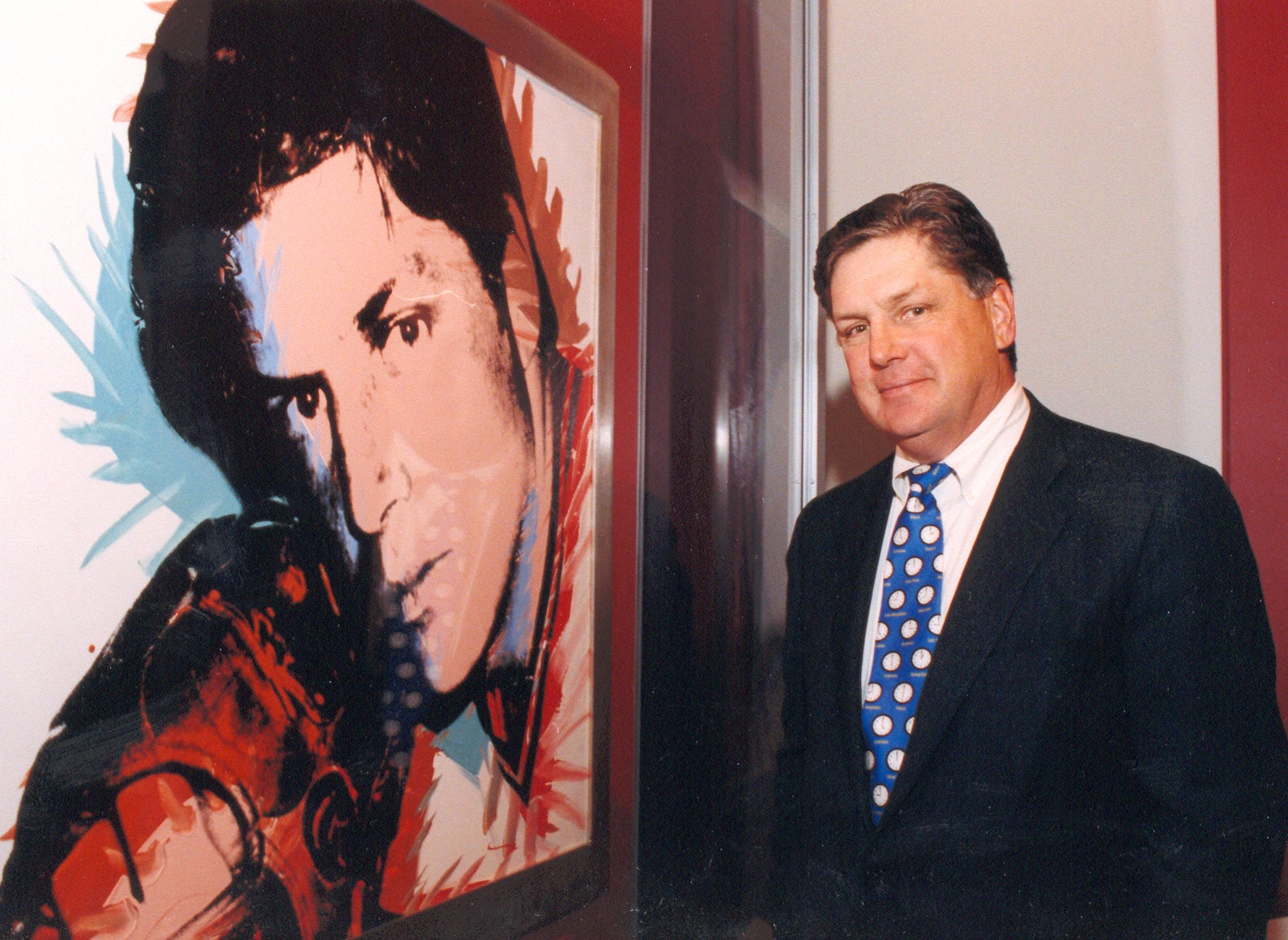
Tom Seaver remembered as one of baseball’s greatest pitchers

Tom Seaver strikes out 10 straight Padres
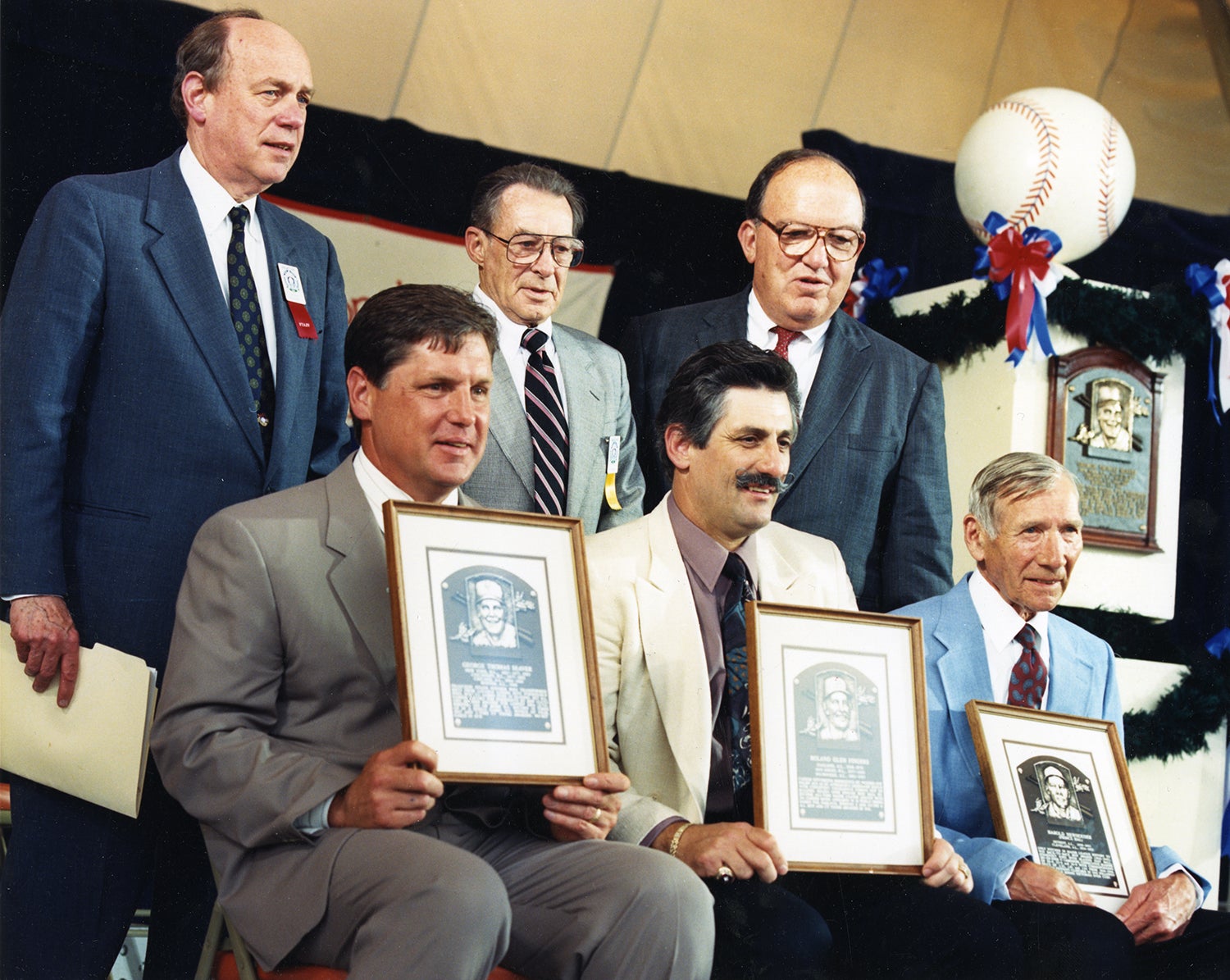
Fingers, McGowan, Newhouser and Seaver are inducted into the Hall of Fame
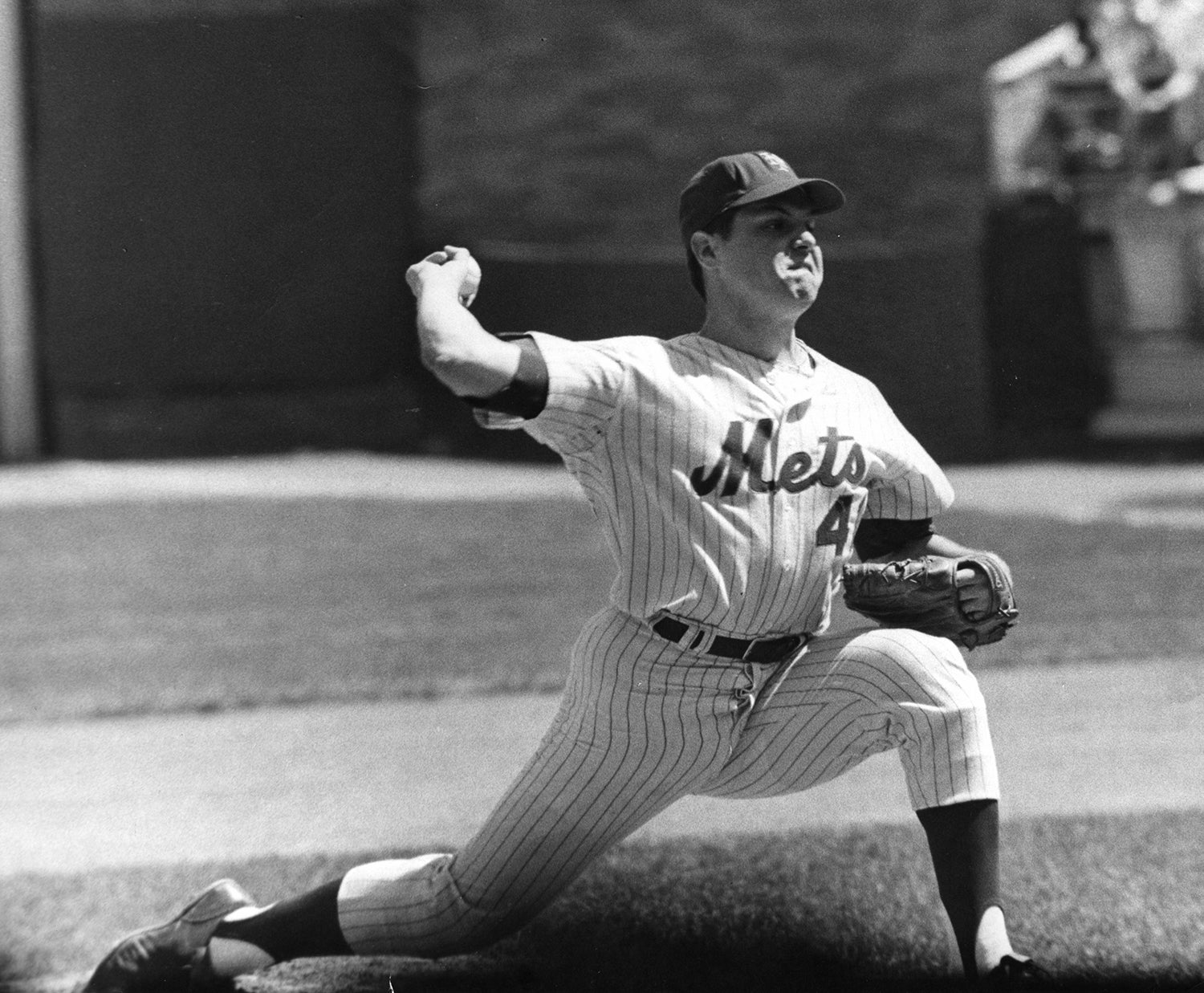
Seaver signs richest one-year deal for pitchers in MLB history

Tom Seaver remembered as one of baseball’s greatest pitchers

Tom Seaver strikes out 10 straight Padres

Fingers, McGowan, Newhouser and Seaver are inducted into the Hall of Fame



